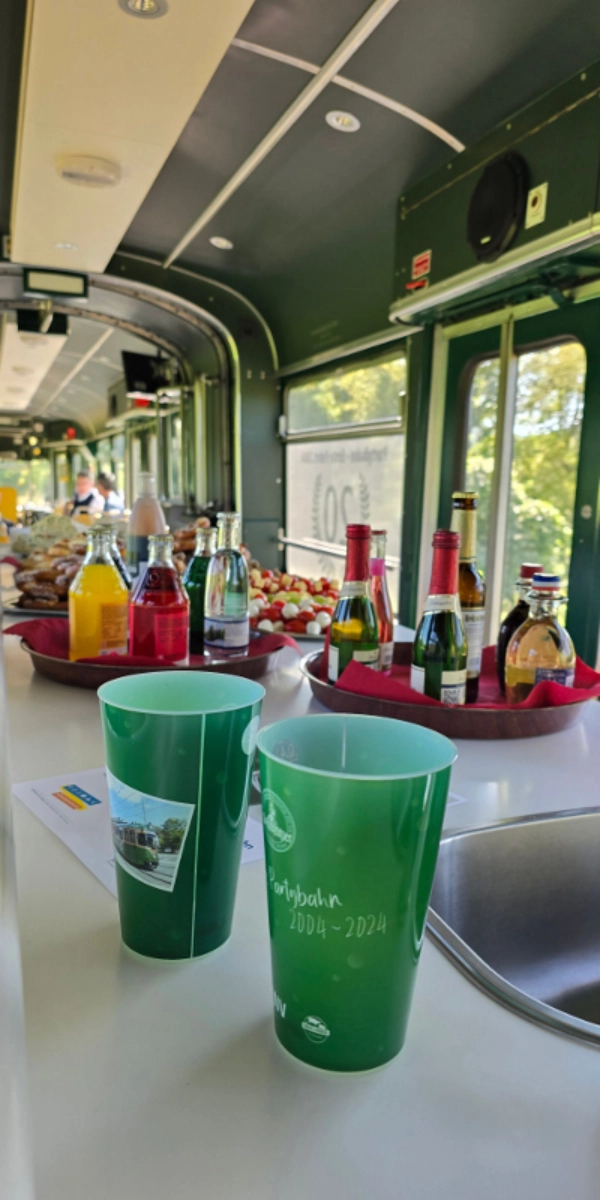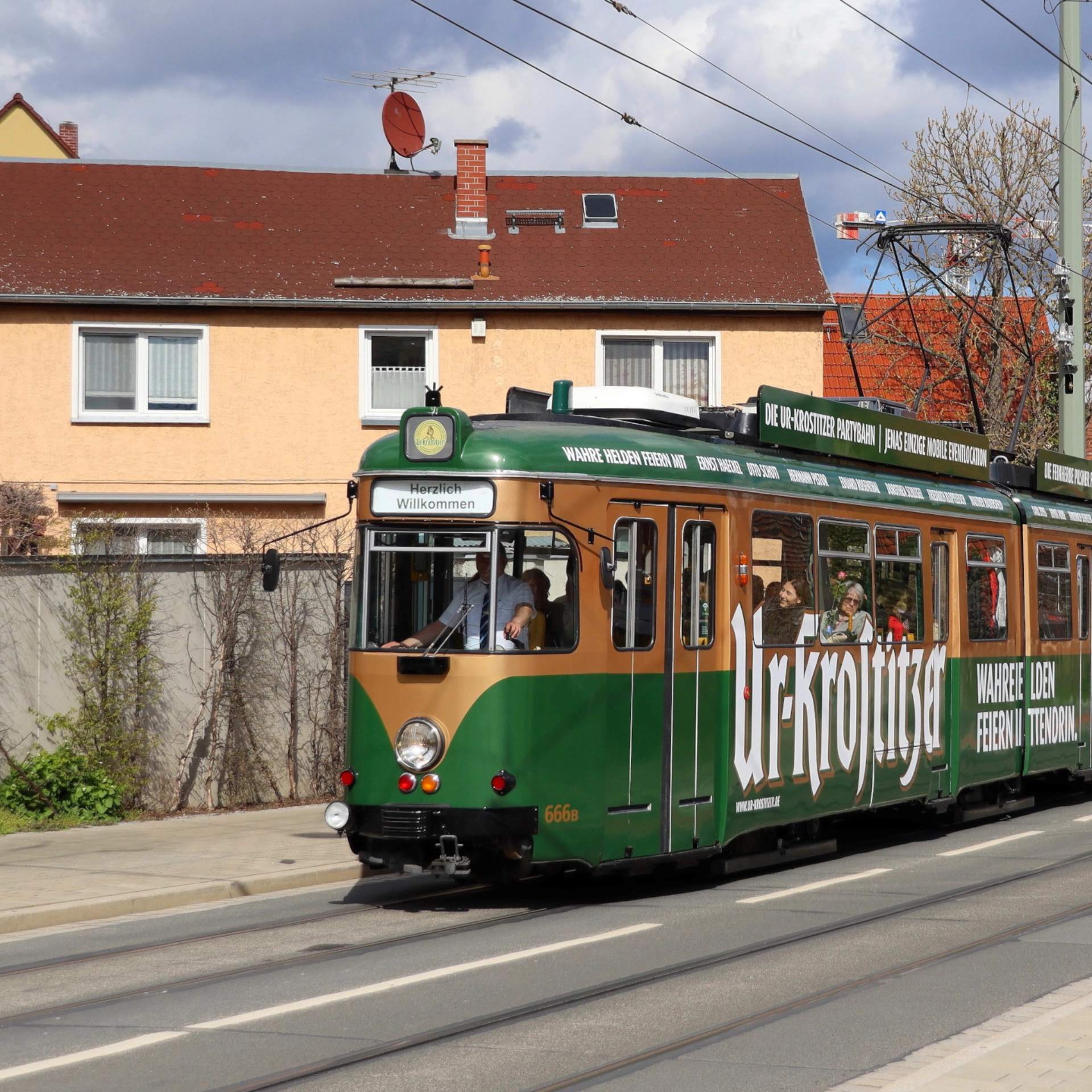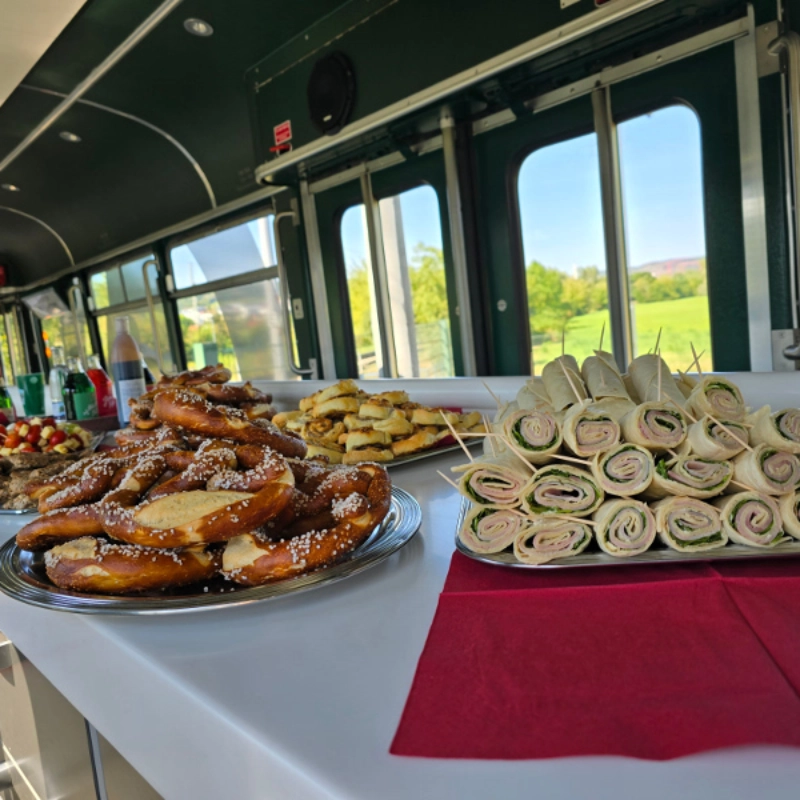The Ur-Krostitzer Party Train
Our Ur-Krostitzer-Partybahn actually is the former Heidelberger Straßenbahn No. 221, type GTW6, built in 1966. It has been in our possession since 2003 and was converted into a party train in 2004. In addition, it was completely renovated in 2020 and provided with a new interior.
You are looking for an extraordinary location for your business or private party? Then rent our party train. Drive with your guests across the city and discover different corners of Jena from a new perspective while enjoying the best entertainment.
Wir freuen uns über Ihr Interesse an unseren Angeboten. Leider können wir aus betrieblichen Gründen bis auf Weiteres keine Buchungsanfragen annehmen. Wir bitten um Ihr Verständnis.
This is what our party location offers:
- 25 seats
- 15 standing places
- Audio and video system
- MyJena WiFi
- Socket with USB-plug under each table
- 6 metres of illuminated counter
- 3 screens
Catering
Lassen Sie sich und Ihre Gäste kulinarisch durch unseren Cateringpartner Hofladen Franke verwöhnen. Ob Familienfeier, Junggesellenabschied, Firmenjubiläum, Schuleinführung oder Weihnachtsfeier - mit unserer Partybahn bleiben keine Wünsche offen und einer gelungenen Feier steht nichts mehr im Wege.
Sprechen Sie Ihre Wünsche, Vorstellungen und das konkrete Angebot direkt mit den Mitarbeitern vom Catering ab. Den Kontakt vermitteln wir Ihnen bei Buchung unserer Partybahn. Natürlich ist auch immer Servicepersonal bei der Fahrt dabei. Eine Übersicht der Grundangebote sehen Sie unten, die Preise gelten pro Person.
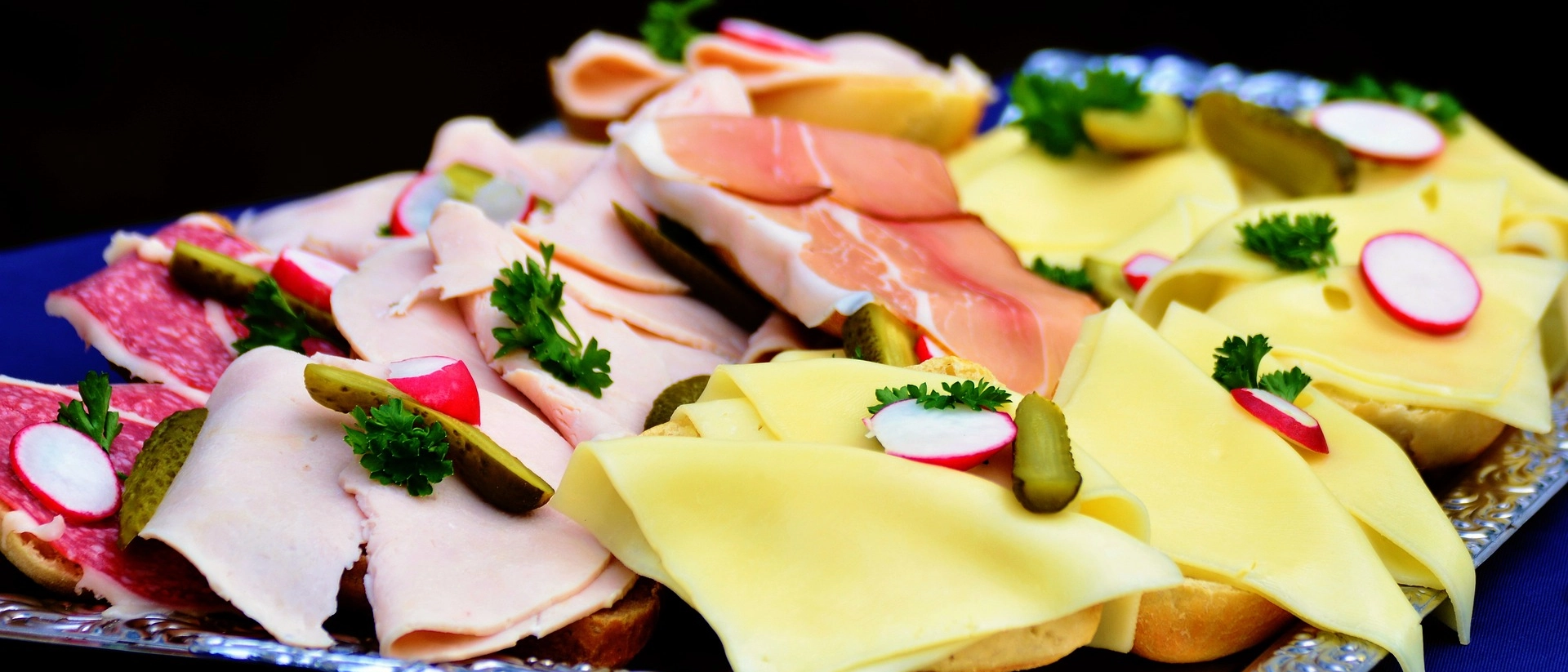
Angebot 1
- Belegte Brötchen (wahlweise mit Wurst und Käse aus eigener Herstellung, Fisch und Aufstrich)
- Mettbrötchen mit frischem gewürztem Schweinehack und frischen Zwiebeln aus der Region
- Käsespieße (Gouda mit Weintrauben)
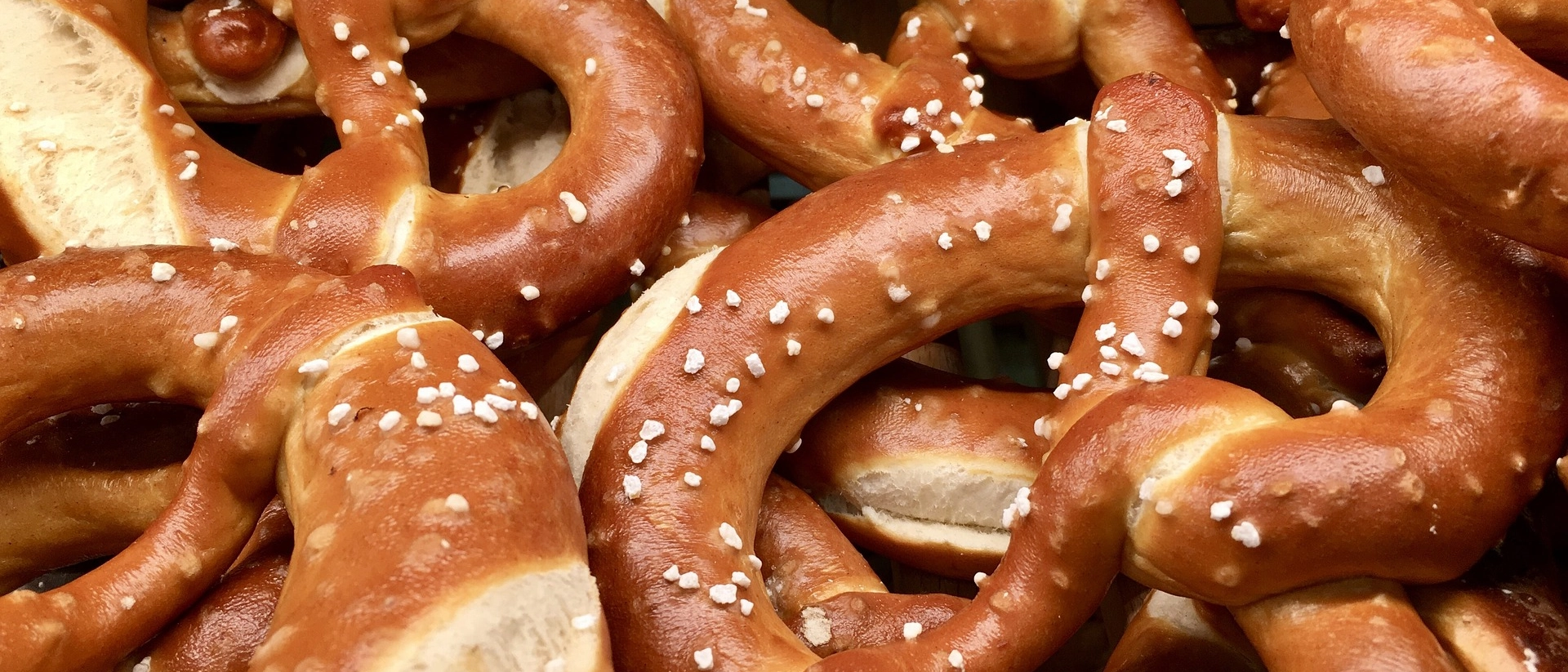
Angebot 2
- Wiener mit Brötchen (Wiener aus eigener Herstellung mit ofenfrischen Brötchen, Senf und Ketchup)
- Brezeln mit Butter und Schnittlauch
- Gemüsesticks (regionales Gemüse mit Dip)
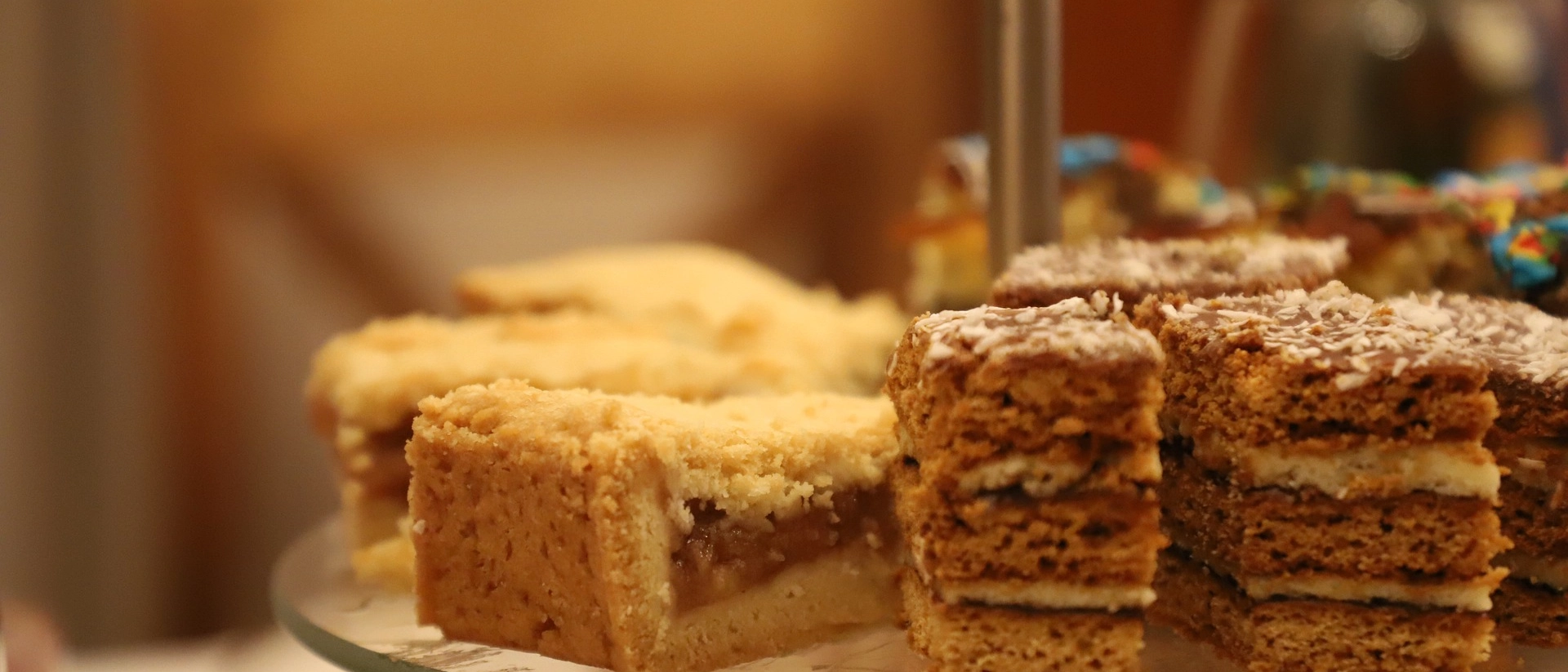
Angebot 3
- Gemischte Kuchenplatte (4 - 6 Sorten je Saison und Personenanzahl)
- Ein Heißgetränk (Kaffee, Cappuccino, Schokolade, Tee)
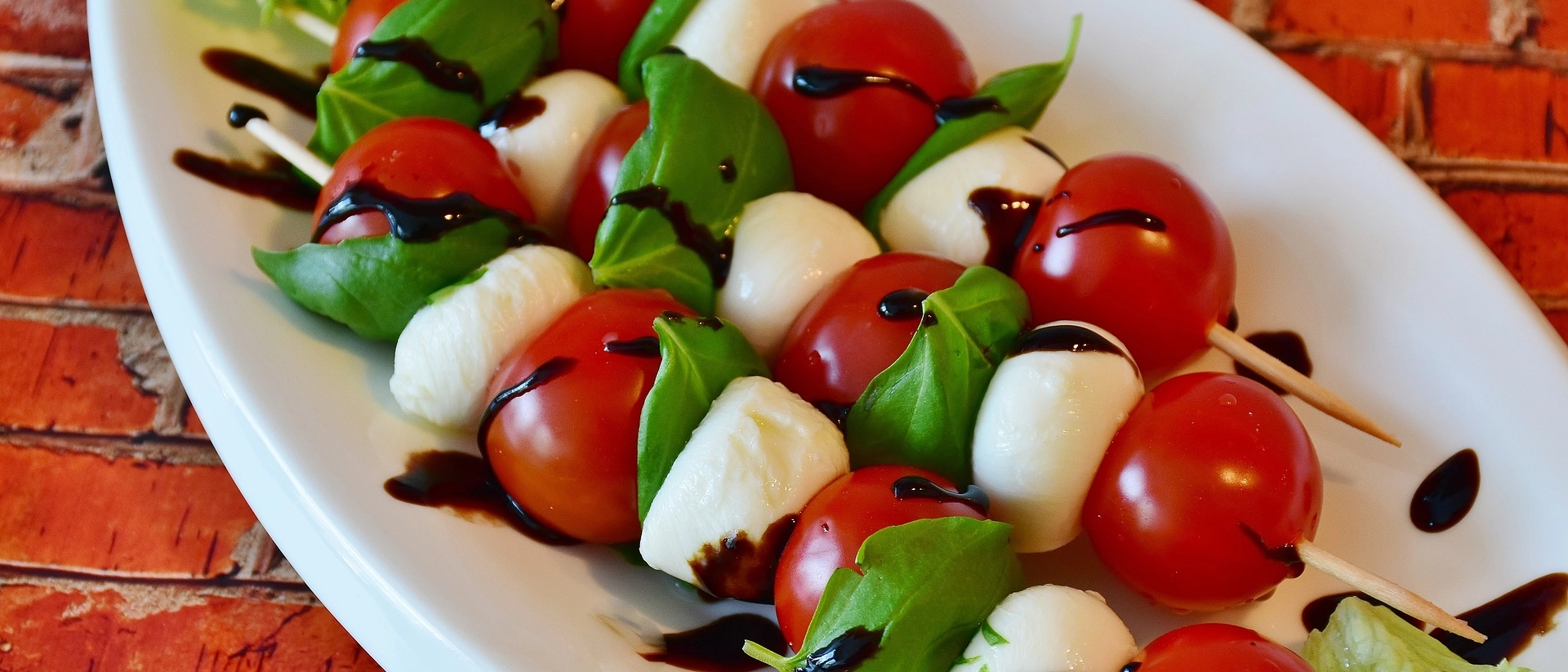
Angebot 4
- Verschiedene Pumpernickel garniert mit Wurst, Käse und Eiern aus eigener Produktion/Herstellung, Fisch und Aufstrichen
- Tomaten-Mozzarella-Spieße auf Rucolabett mit Balsamicocreme
- Käsespieße mit Oliven und Rosmaringebäck
Rental prices party train
| Basic price (up to 1.5 hours) | 380 euros |
| Each additional hour started | 90 euros |
| Minimum turnover catering | 125 euros/hour |
The price applies for the time from boarding to disembarking. You can freely choose the stops where you want to begin and end your journey as long as they are within our line network.
Contact
For your personalized offer, please contact:
Sales/Service
The design concept of our Ur-Krostitzer party train
„The design of the Partybahn clearly deviates from the routine. It is a special object, unique and distinct.“ This is how interior designer Hedi Kappler summarized the modernization of the Partybahn. Inspired by the sponsor, the Krostitzer brewery, the interior design indeed follows the basic idea and color scheme of a filled beer glass. Matching the product, i.e. beer, the liquid gold with its fresh and creamy head, it is exactly these colors that can be found in the party train: gold for the seats and white for the tables. Furthermore, our sponsoring partner came up with the idea of linking the party train with shining lights from Jena, i. e. with persons that influenced the city during their lifes.
Ride and celebrate with our shining lights
Each seating area is named after a shining light. The names are written on the roof slope above the respective seats.

Who are they, those shining lights? Here, we present you Bauersfeld, Klopfleisch, Schiller & co.:
...was a German politician during the Weimar Republic, who dedicated herself especially to social welfare. She was the oldest dauther of Ernst Abbe. Grete Unrein chaired the mother's home in jena, was board member of the patriotic institute of Red Corss women's clubs and patron as well as board member of the reading hall club.
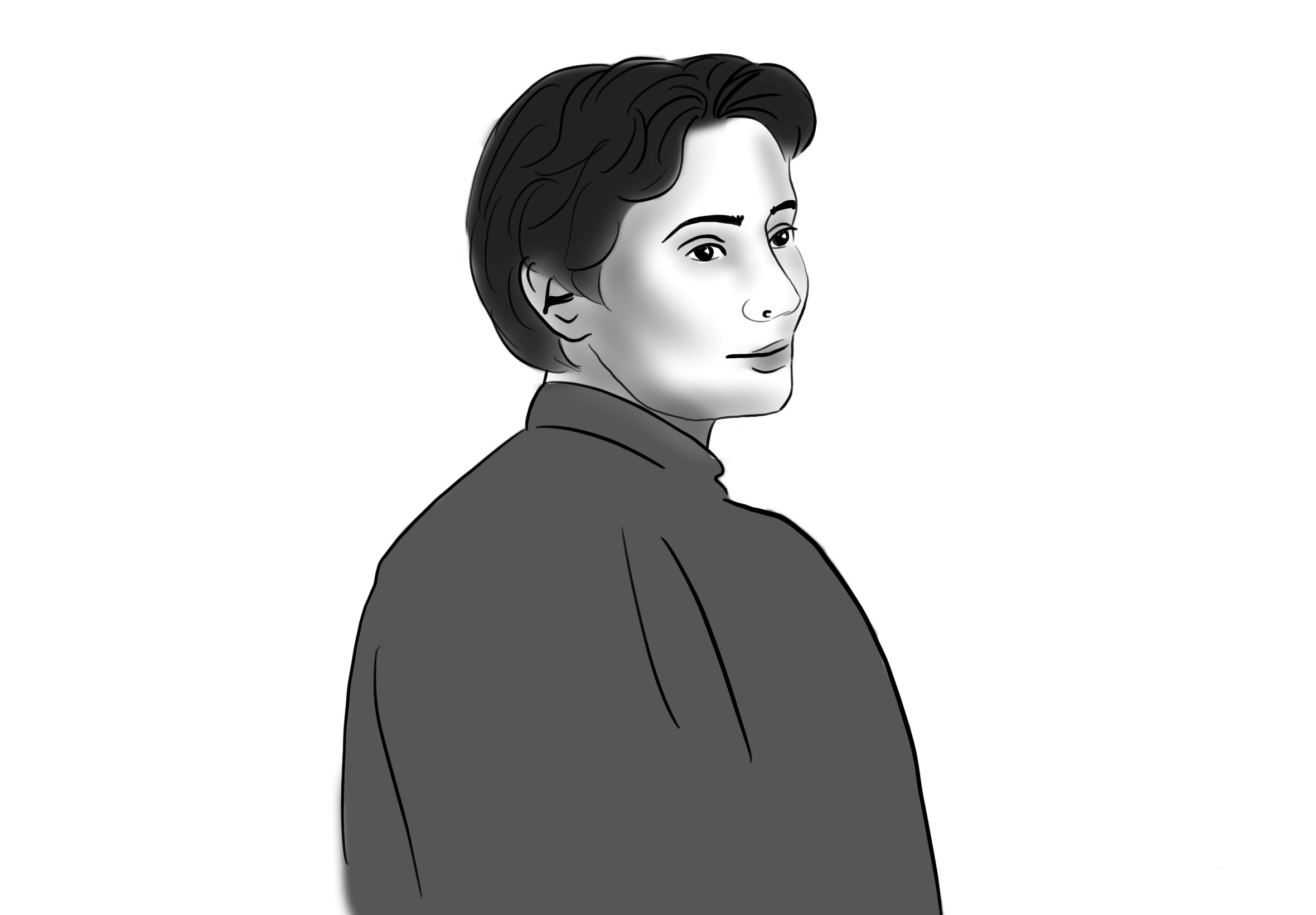
...was a German jurist, legal historian, lecturer and politician. Twice, Eduard Rosenthal was named director of University of Jena. Moerover, he was honoured Privy Council. He was also counsellor for Ernst Abbe, coproprietor of Zeiss, and responsible for the progressive statutes of the Carl-Zeiss-foundation after 1890.
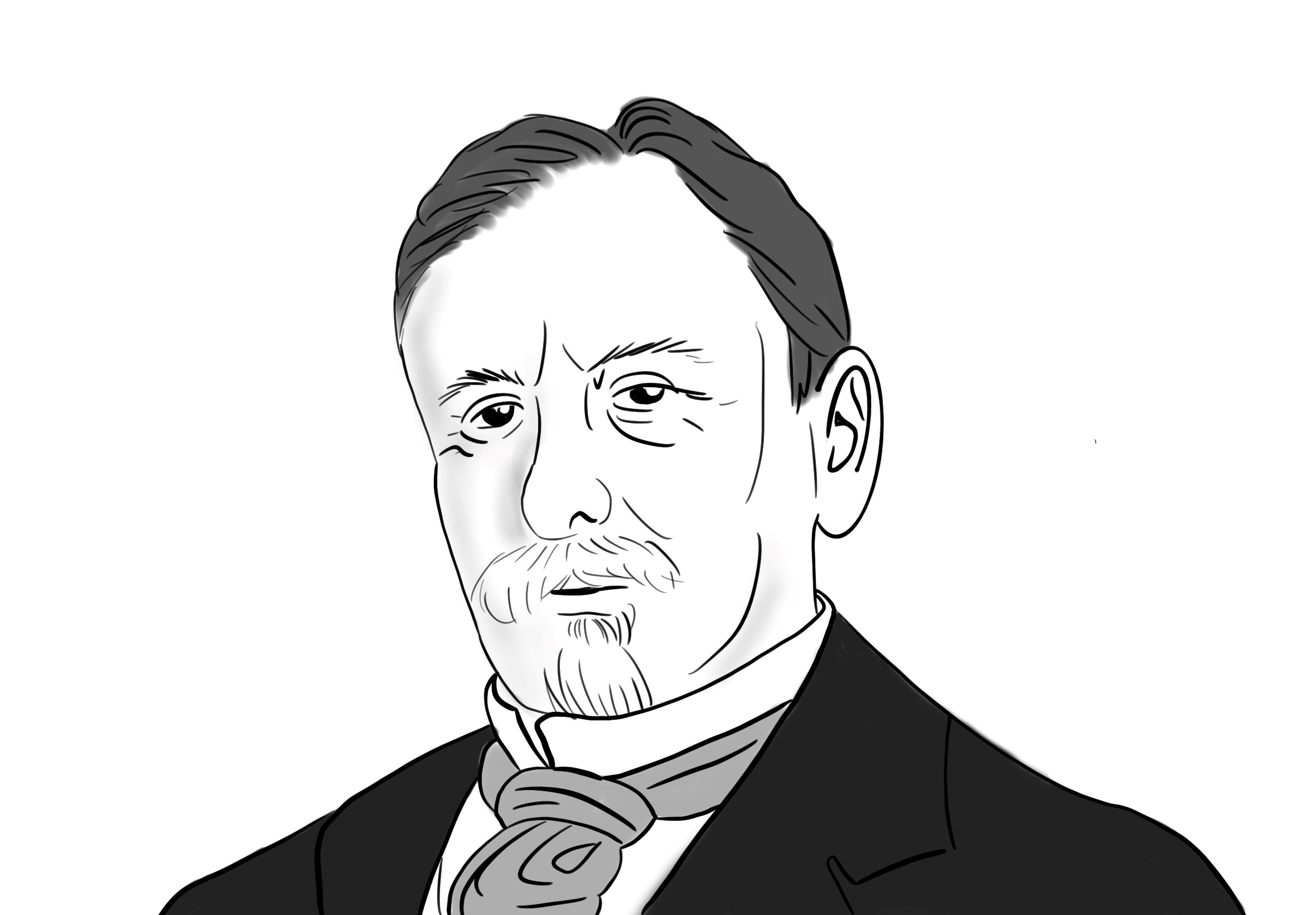
...was a German mathematician, physicist and pedagogue, who is considered the Nestor of modern ophthalmic optics thanks to his achievements regarding the science of optometry in Germany. He was director of the technical college for ophthalmic optics in Jena.
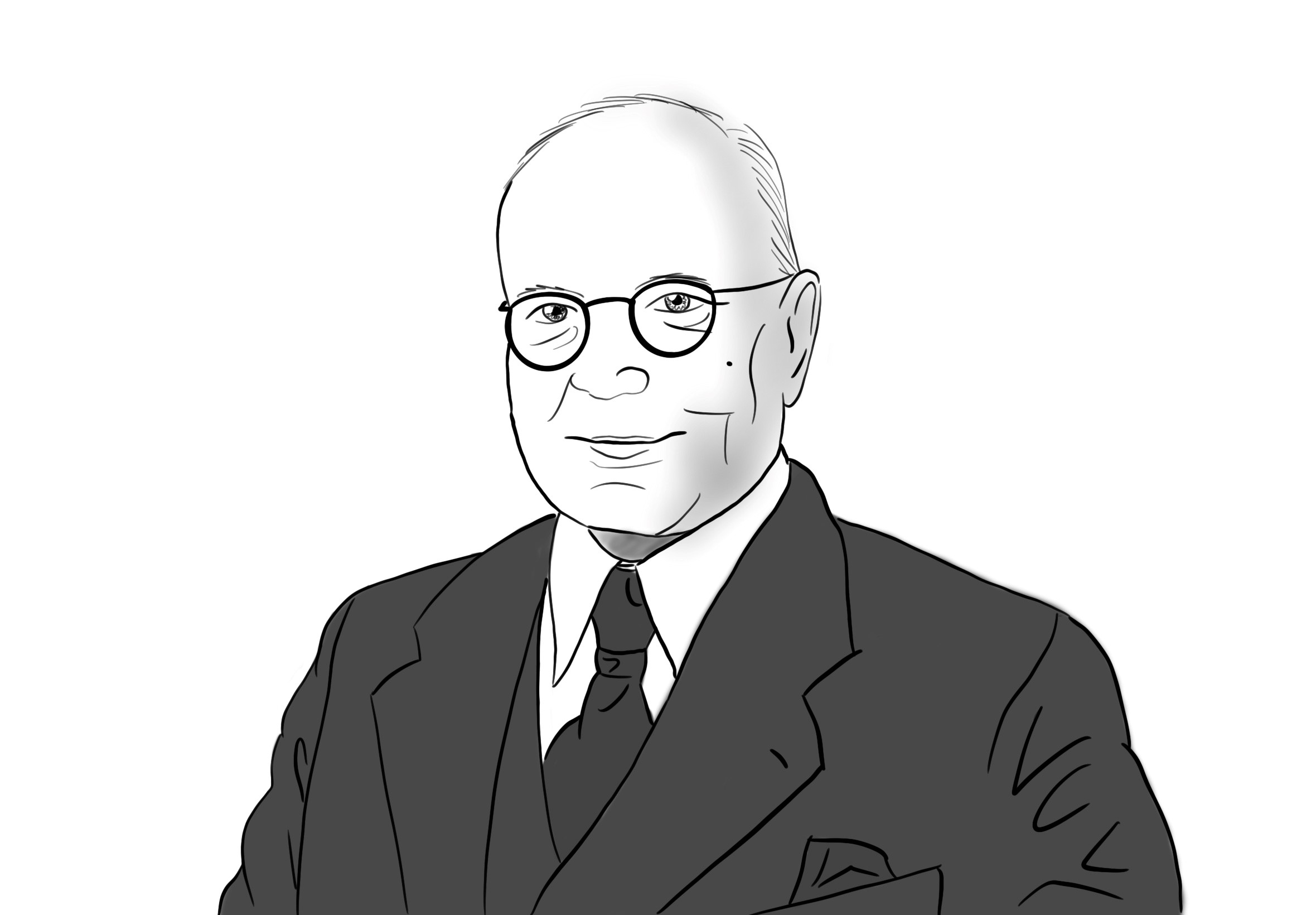
...was a German physician, zoologist, philosopher and freethinker, who developed Charles Darwin's ideas further into a special theory of evolution. With his popular texts and presentations, he contributed to the currency of Darwinism in Germany, which he wanted to incorporate in school curricula. In 1908, he donated the Phyletic Museum Jena.
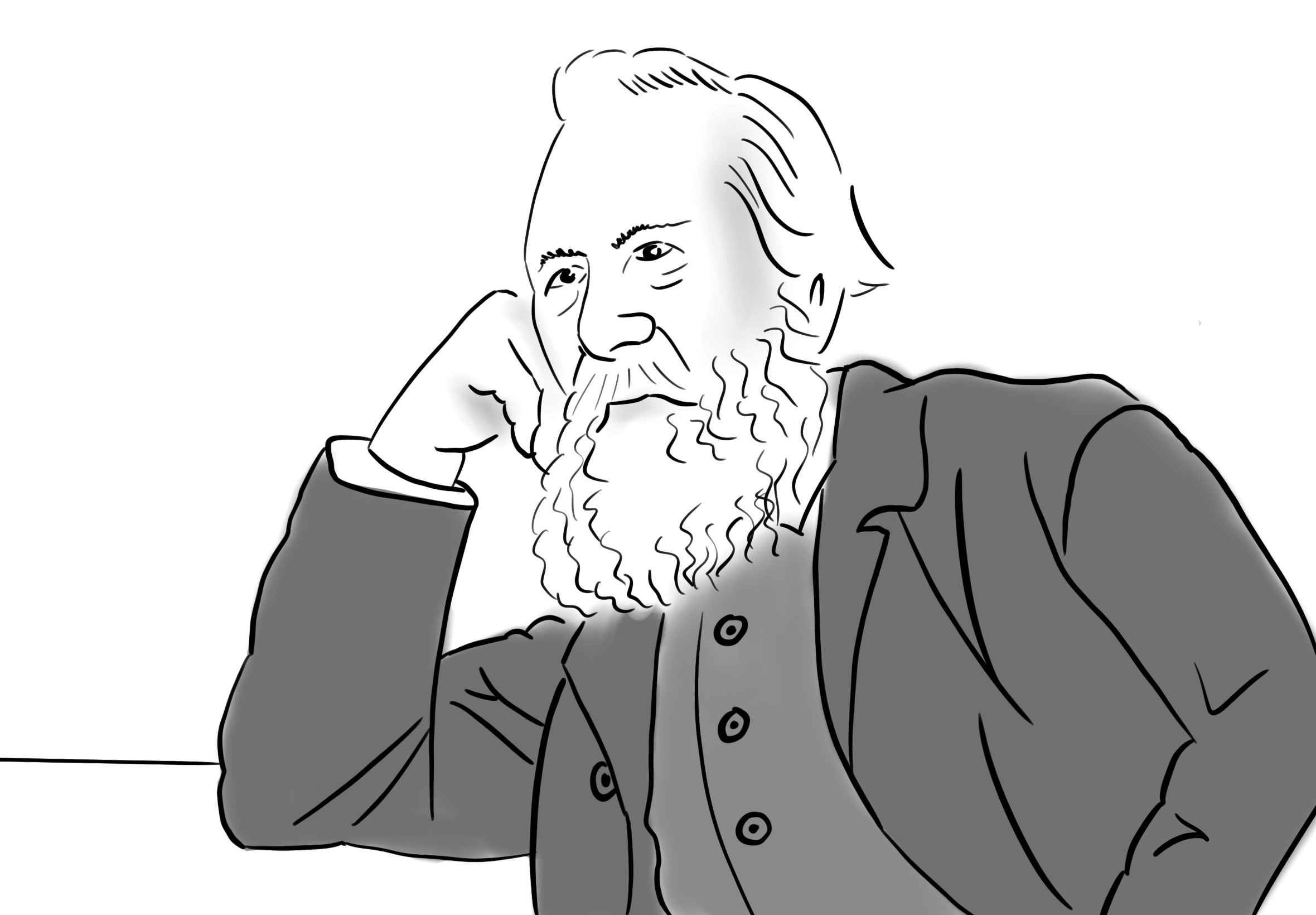
...was a German manager, who managed Zeiss Jena together with Friedrich Schomerus and Victor Sandmann. Later, he became director of VEB Carl-Zeiss Jena. Furthermore, Hugo Schrade was National Laureate of Merit in science and technology for his exuberant achievements during the reconstruction of the Zeiss- and Schott-factory.
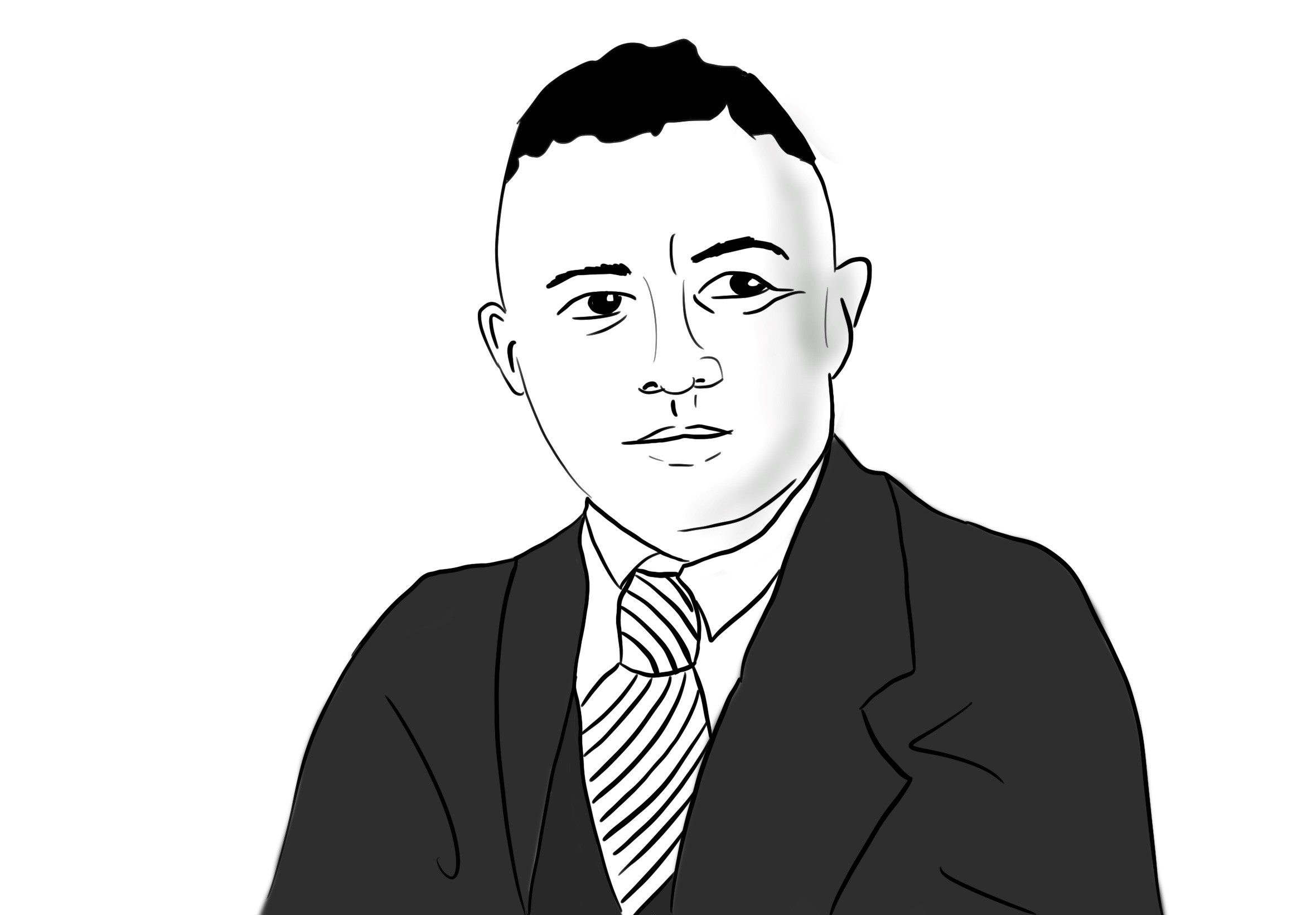
...was a German pre- and arts historian, professor at University of Jena, founder and long-time head of the Germanic Museum of University of Jena and one of the founding fathers of the pre- and early history studies in what is today Thuringia and Saxony-Anhalt. In 1852, during his studies in Jena, he became member of the student league Burschenschaft Arminia auf dem Burgkeller.
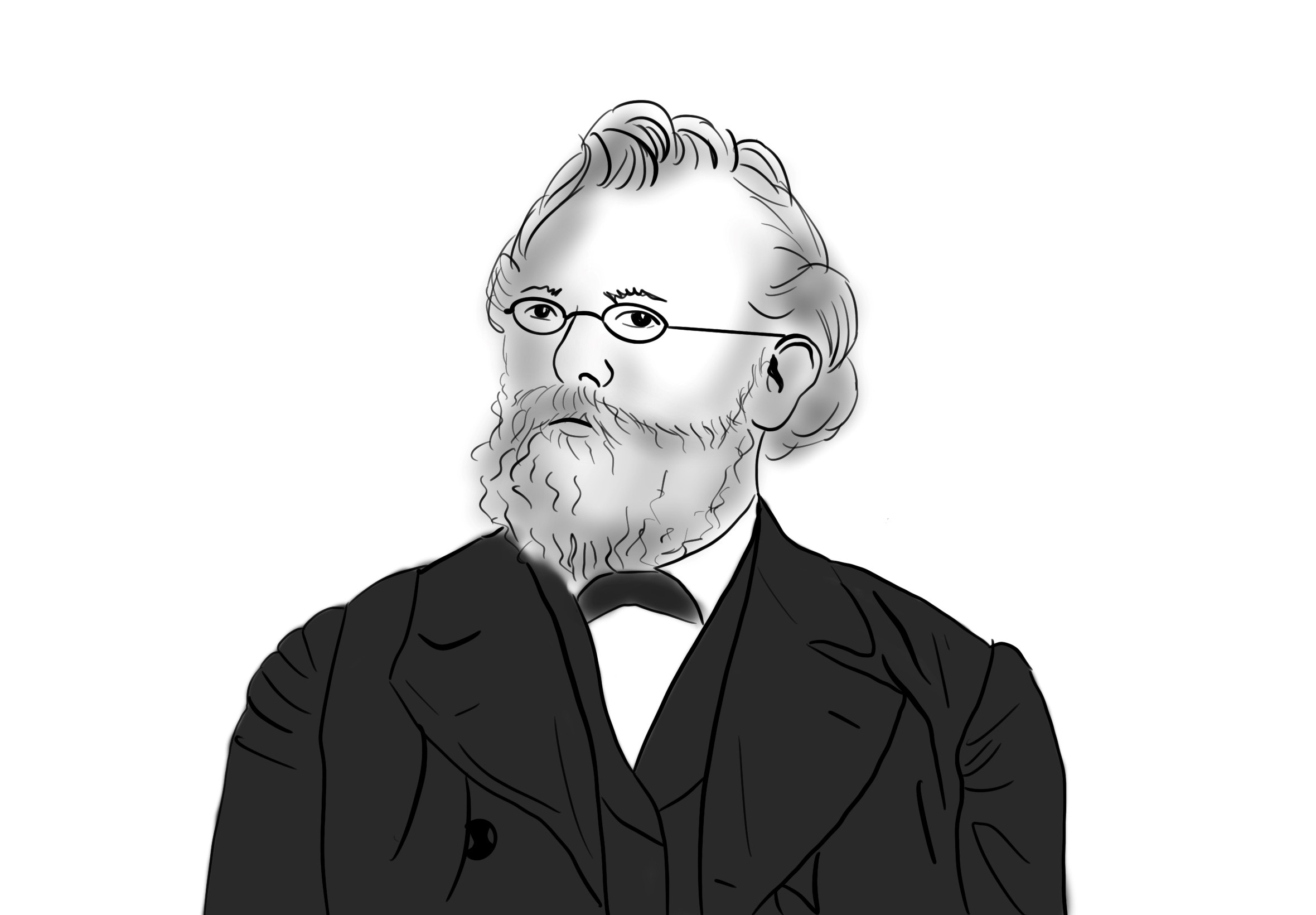
...was a German chemist, glass technician and entrepreneur. He developed glasses with entirely innovative optic characteristics. In 1884, together with Ernst Abbe, Roderich Zeiss and Carl Zeiss, he founded a laboratory for glass engineering, the later Jena glass works Schott & Genossen and today's Schott AG in Mainz.
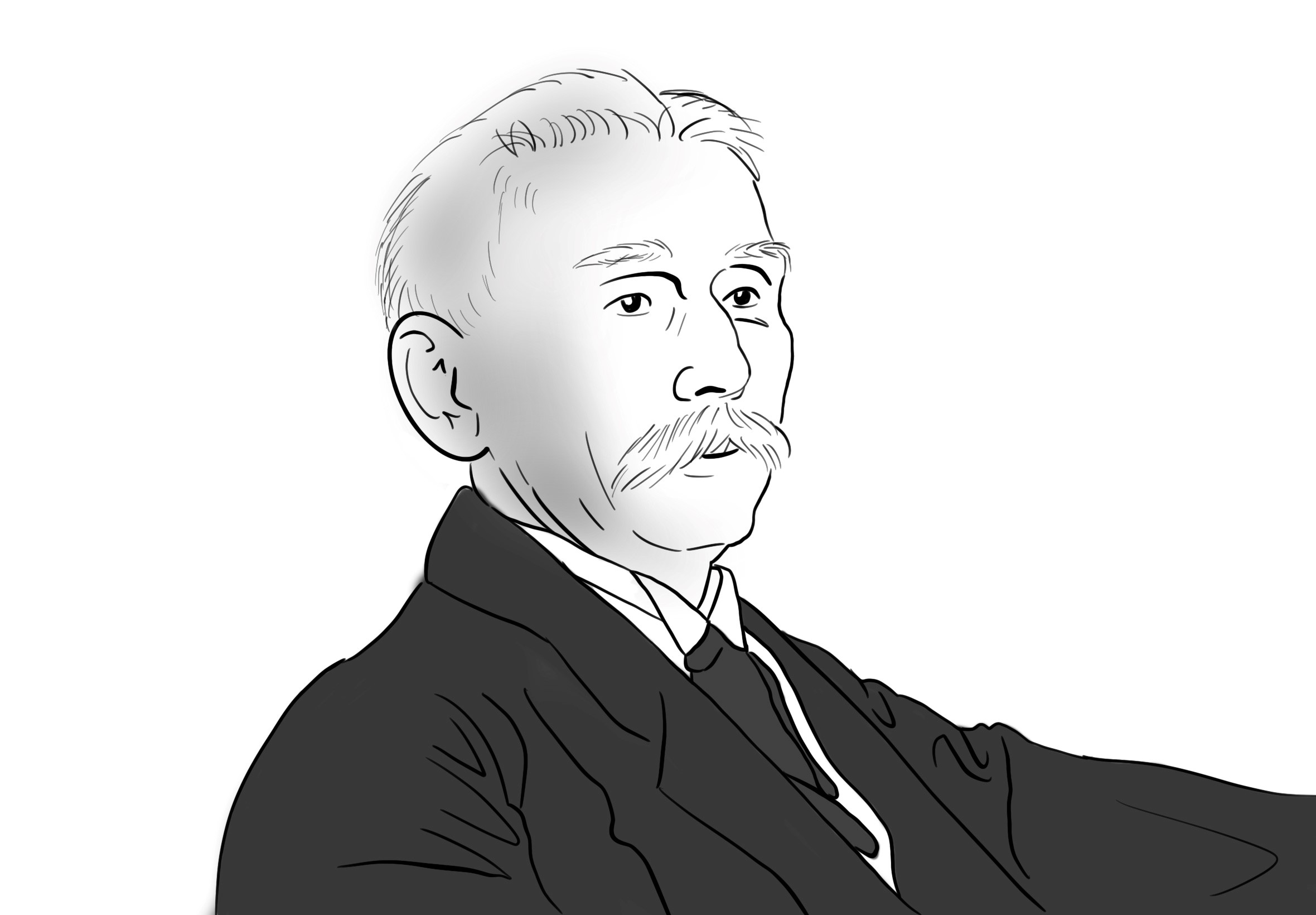
...was a German engineer and physicist, who developed the planetarium, which was presented to the public in 1923. He was also chief executive officer at Carl-Zeiss Jena and lectured as special professor for astronomical physics at University of Jena.
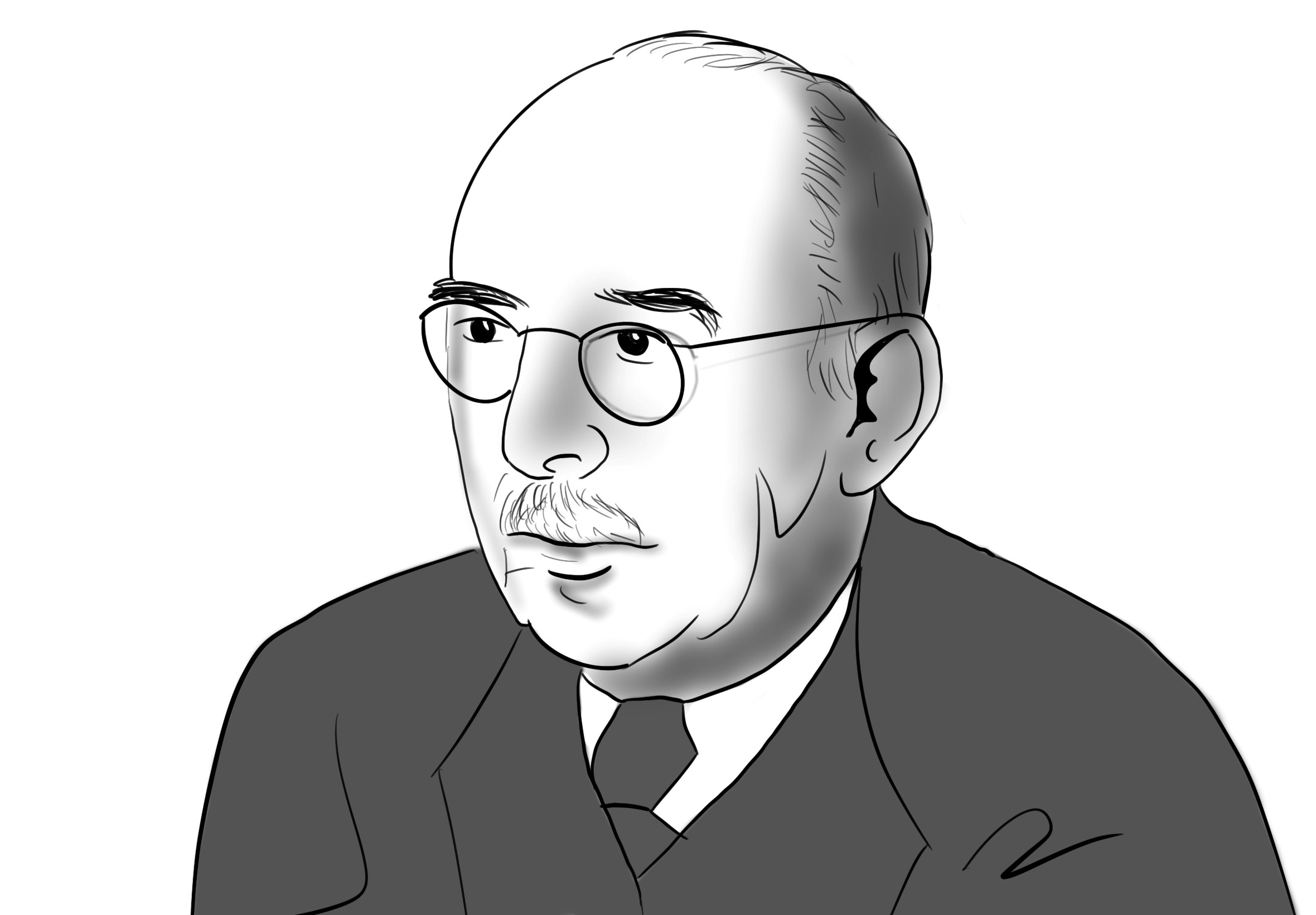
...was a German author, poet, philosopher and historian. Furthermore, she was member and senior president of the Thuringian conference Beratende Landesversammlung Thüringen, the first designated pre-parliament of the anew-constructed Land Thuringia.
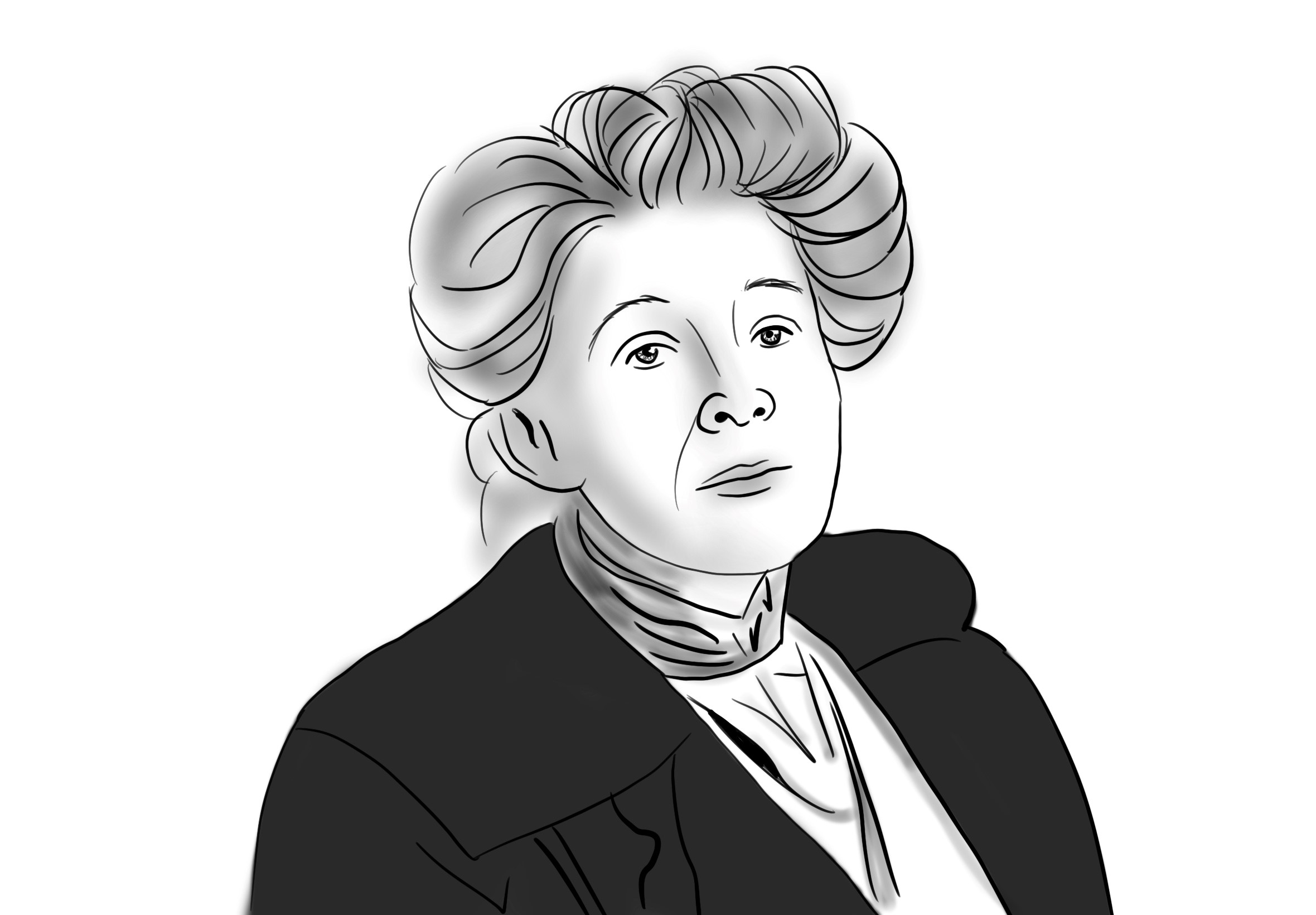
...was a physician, poet, philosopher and historian. He is regarded one of the most important German dramatists, lyric poets and essayists. In March 1797, Schiller bought a garden house in Jena, where he spent the summers from 1797 until 1799 with his family. In this house, some of Schiller's most important works were created, primarily great parts of "Wallenstein" and the beginning of "Maria Stuart".
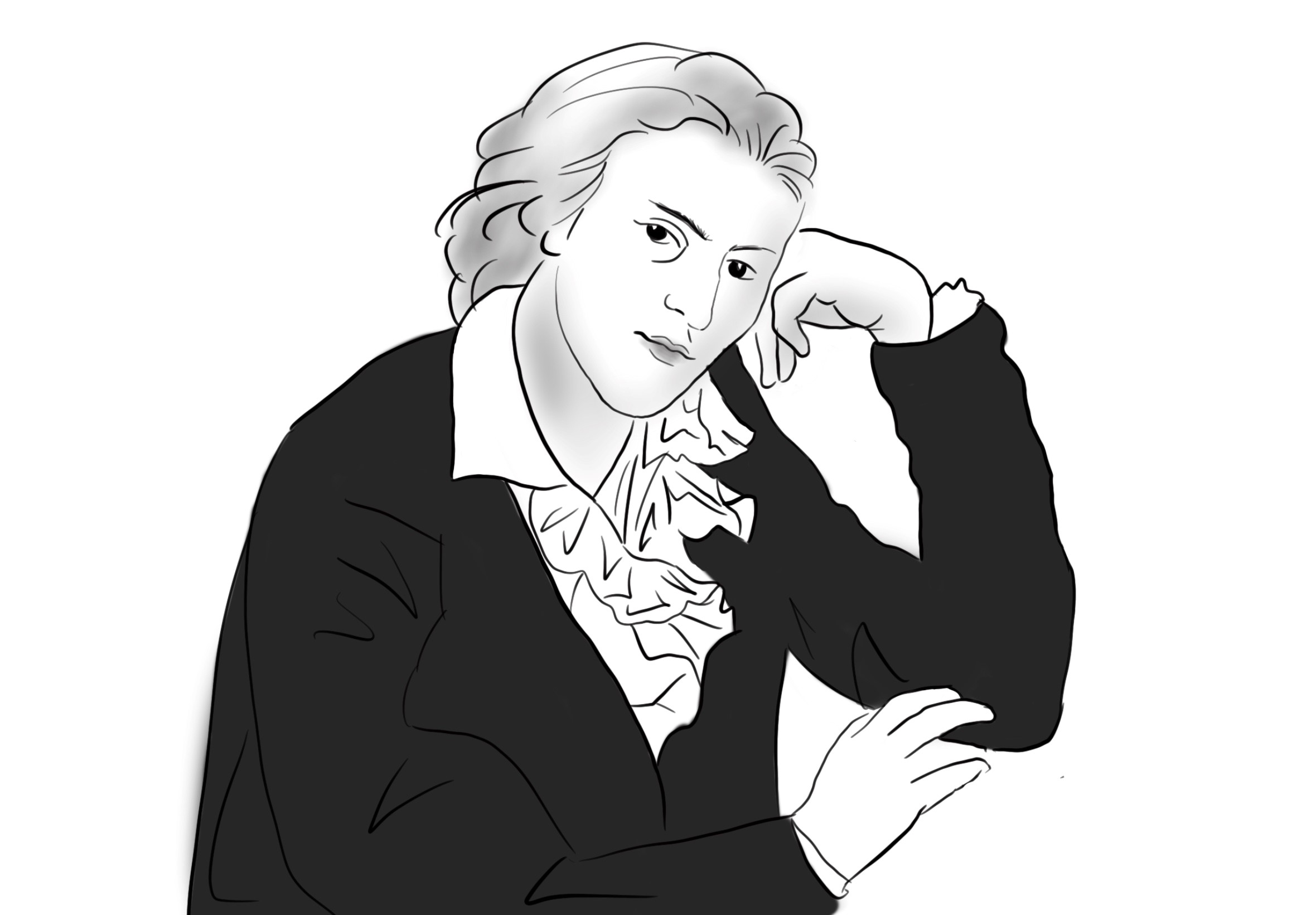
...was a German physicist, statistician, optician, and industrial and social reformer. Together with Carl Zeiss and Otto Schott, he created the base for modern optics and developed numerous optical instruments. From 1899 onwards, he was the lone business owner of the company Carl Zeiss and played a significant role in the foundation of the glass business Jenaer Glaswerk Schott & Gen. (today Schott AG).
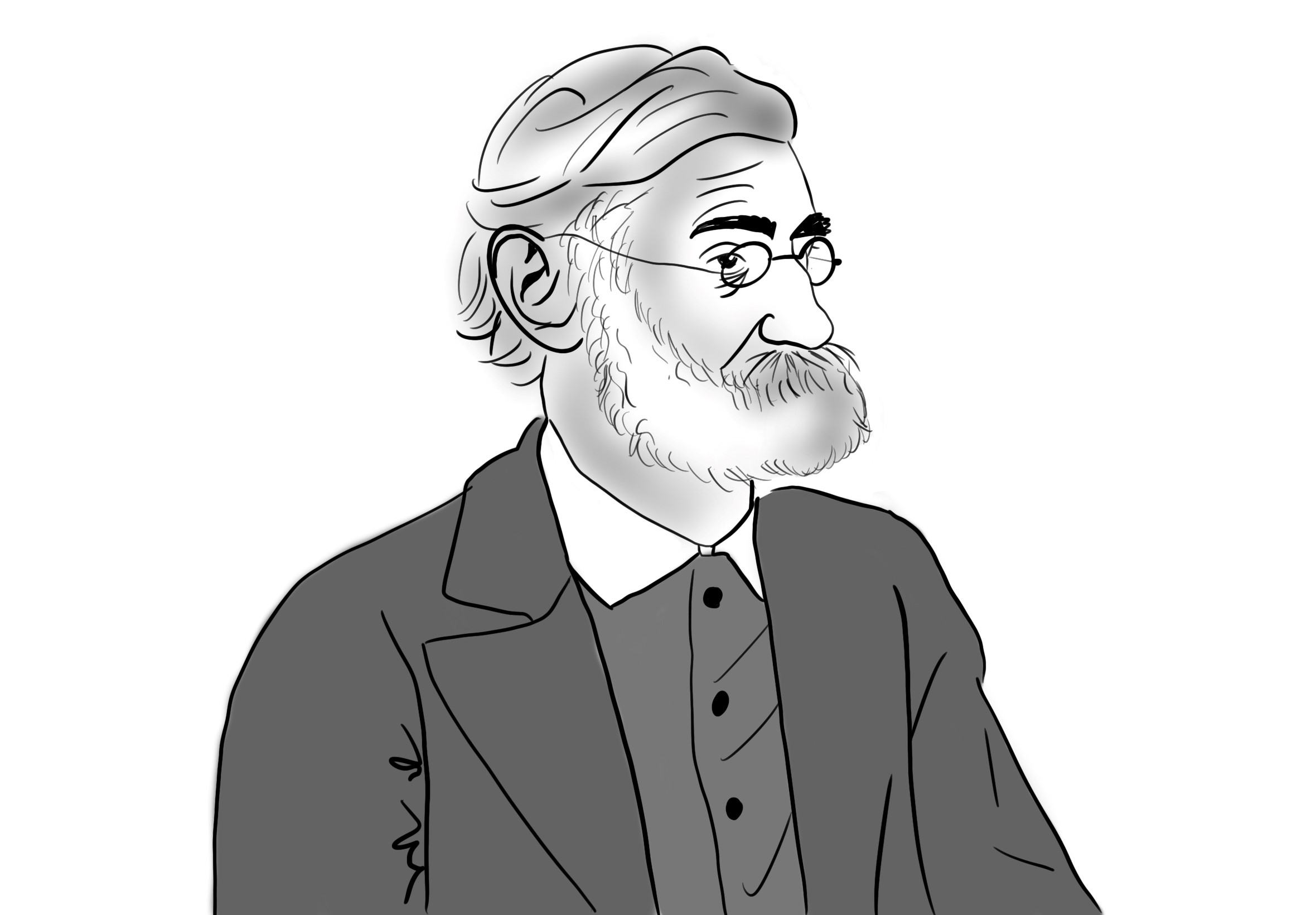
...was a German poet and natural scientist. He is regarded one of the most important creators of German poetry. As a friend and minister of Duke Carl August, he held political and administrative offices at the Court of Weimar and ran the court theatre during 25 years. Together with Schiller, Herder and Wieland, he represented the Weimar Classicism. His work "Faust" became famous as the most important creation of German literature.
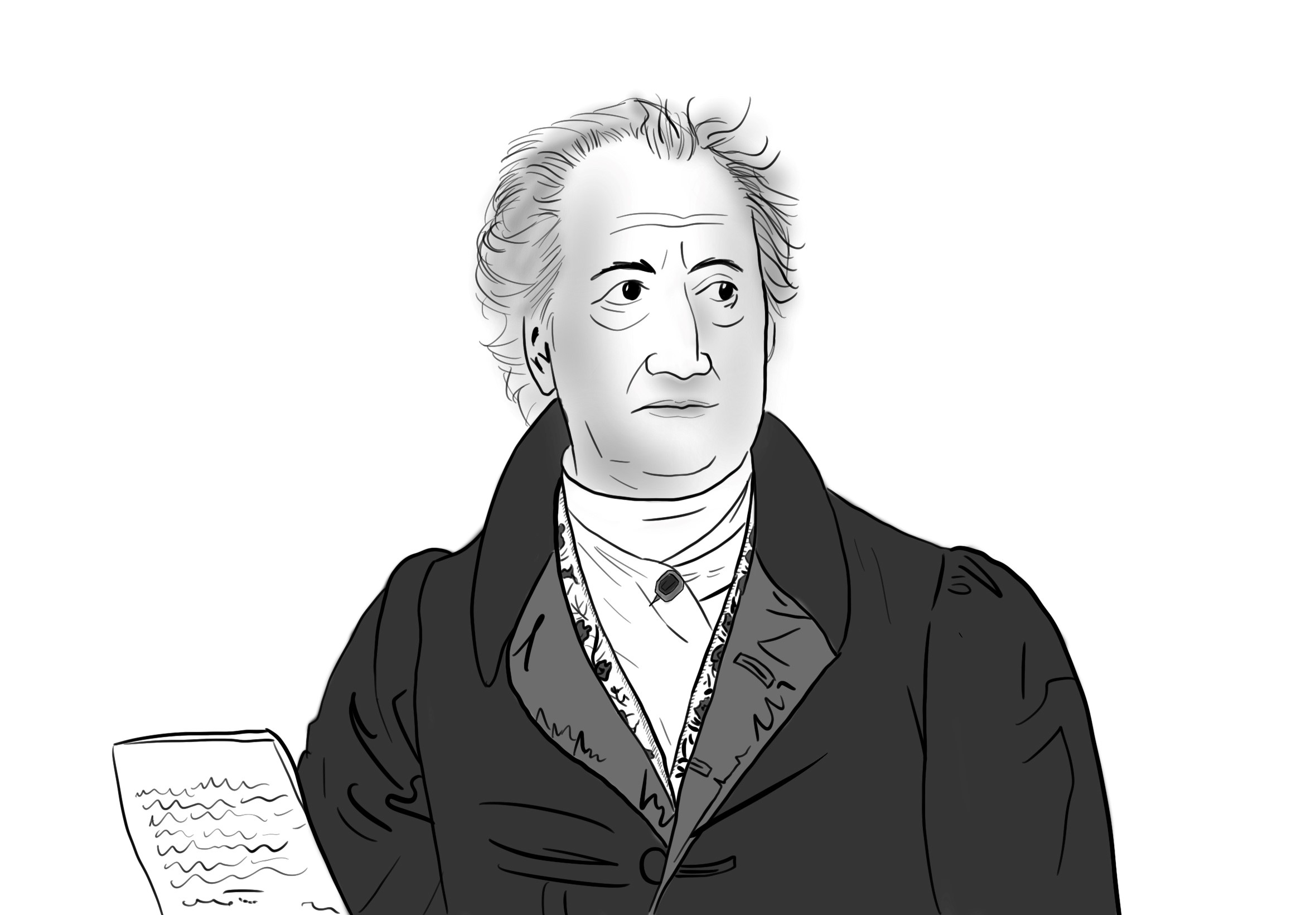
...was a literary critic and writer during the romantic era as well as partner and wife of Friedrich Schlegel. The daughter of the Jewish Enlightenment philosopher Moses Mendelssohn was one of the most famous Jewish women who converted to Christianity in 1800. Together with Friedrich Schlegel, she lived in Jena - the city that, thanks to Novalis, Ludwig Tieck and Schelling, was established centre of the Literary Romantic.
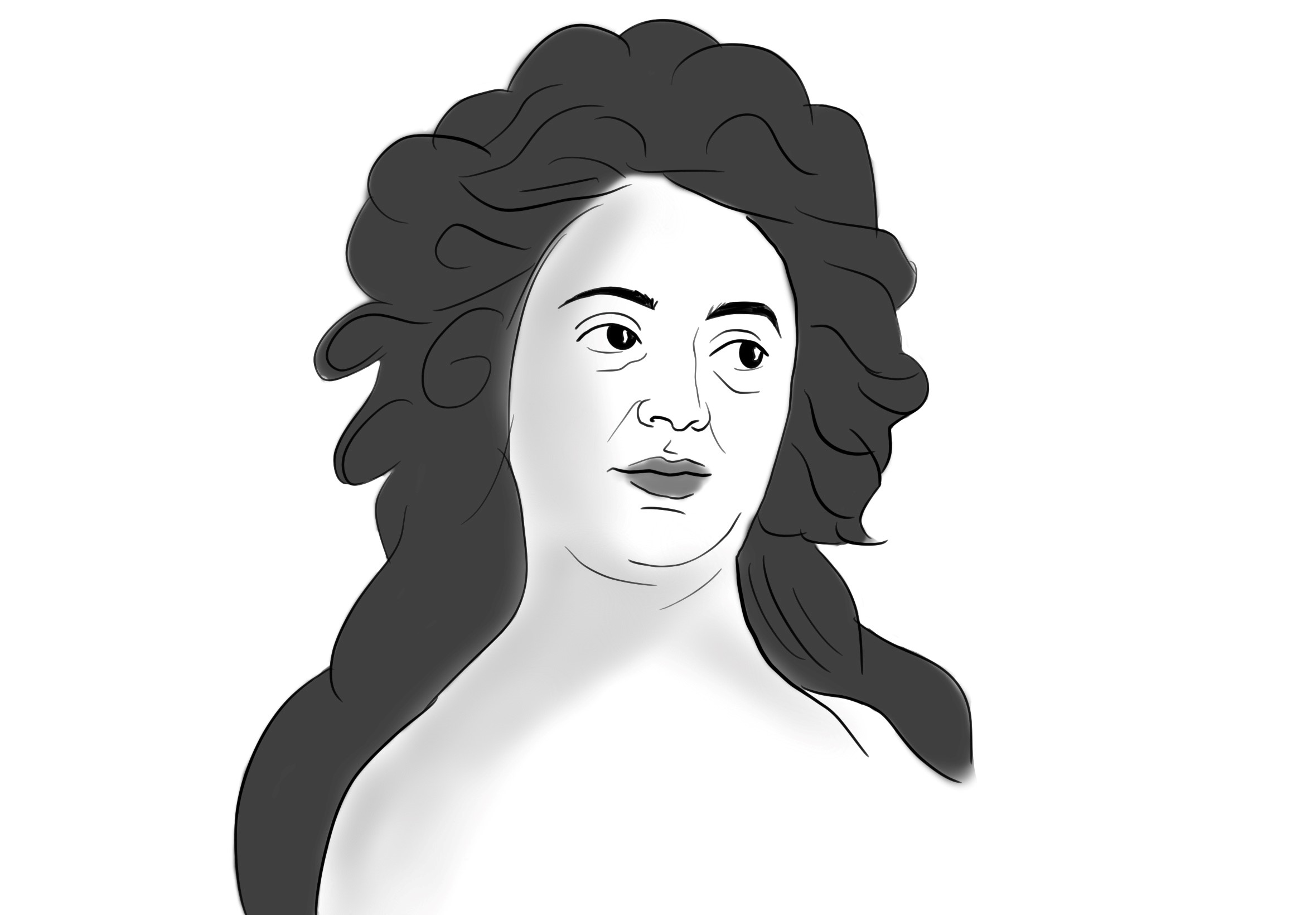
...was a German mechanic and entrepreneur. From 1846, he produced microscopes in Jena. Together with Ernst Abbe, he succeeded in founding microscope construction scientifically. This was the cornerstone for the nowadays internationally operating enterprise Zeiss.
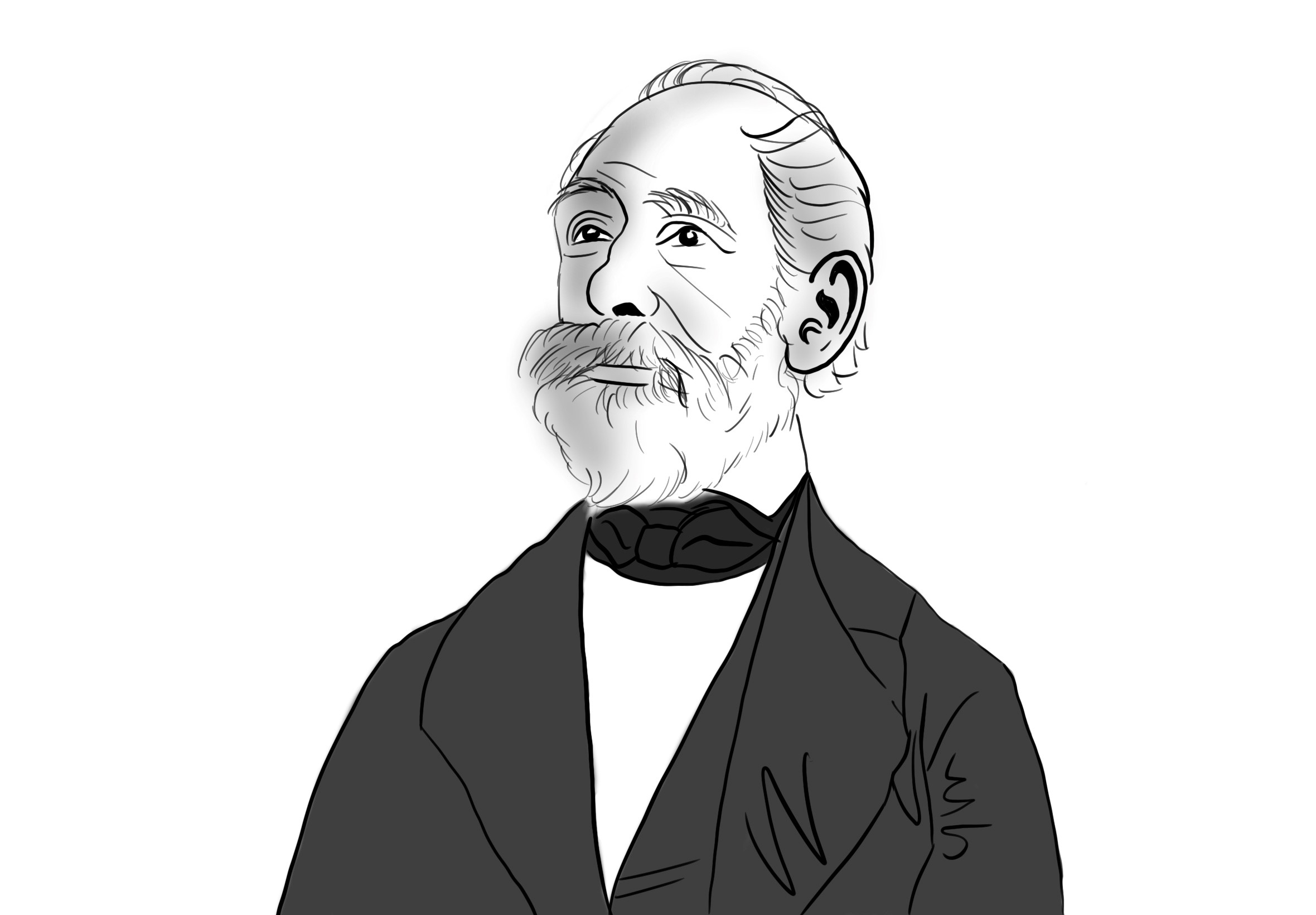
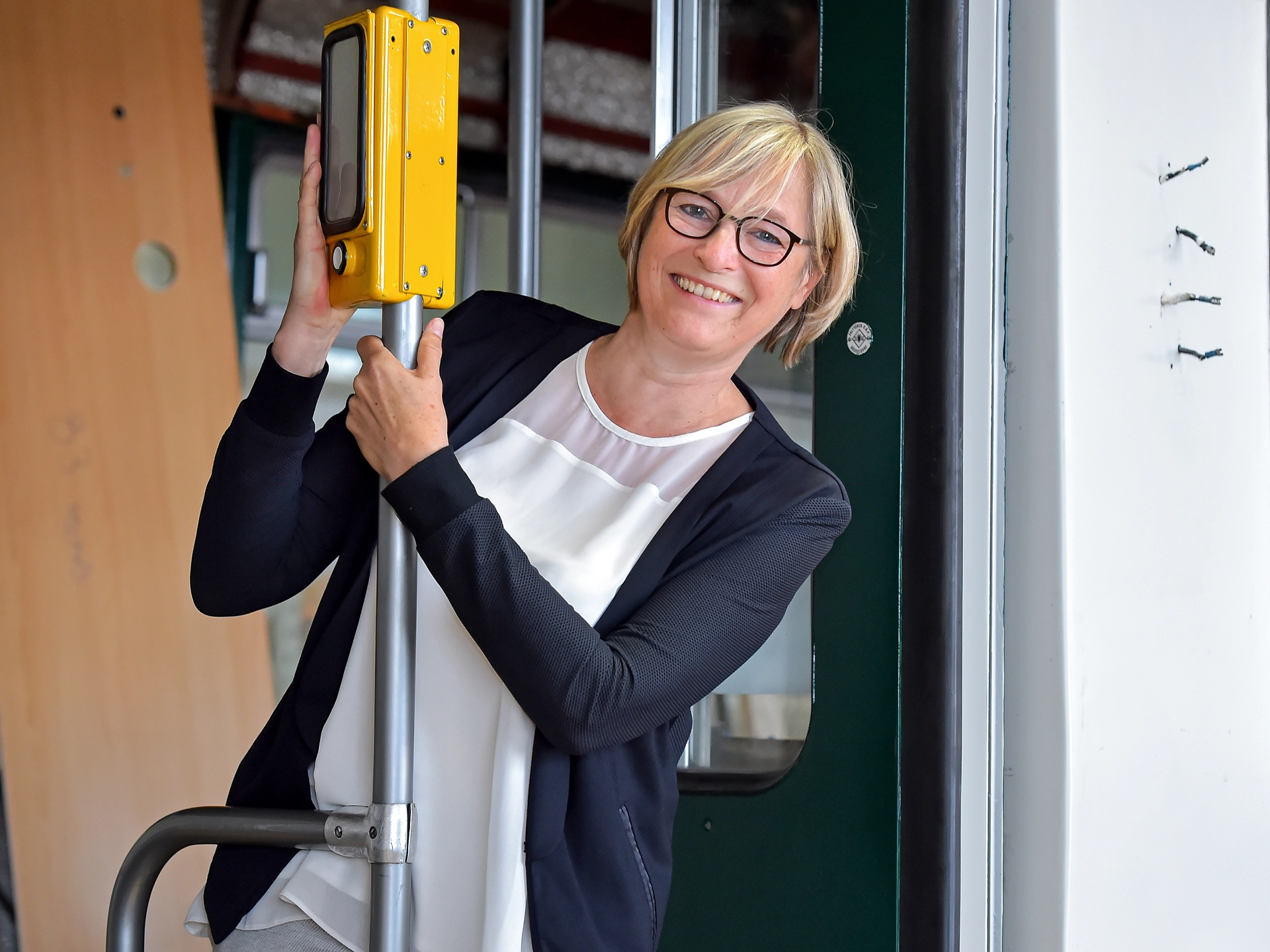
Freshly treated: The Jena party train
Durin the phase of redesign, we talked with Hedi Kappler about what is so special about the new design of the party train. Come on and read the interview in our Stadtwerke-Blog.



